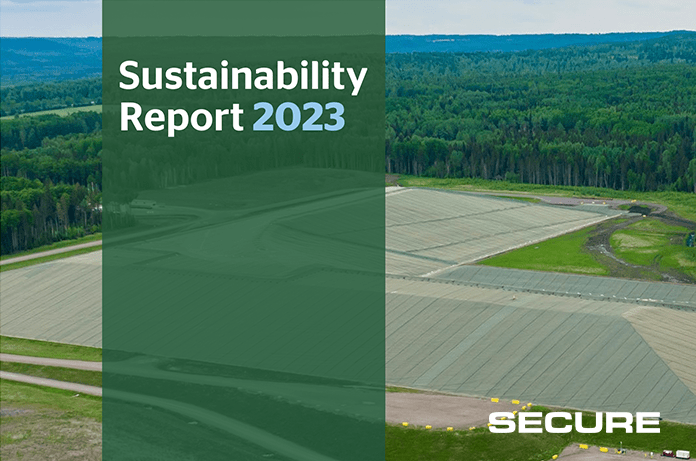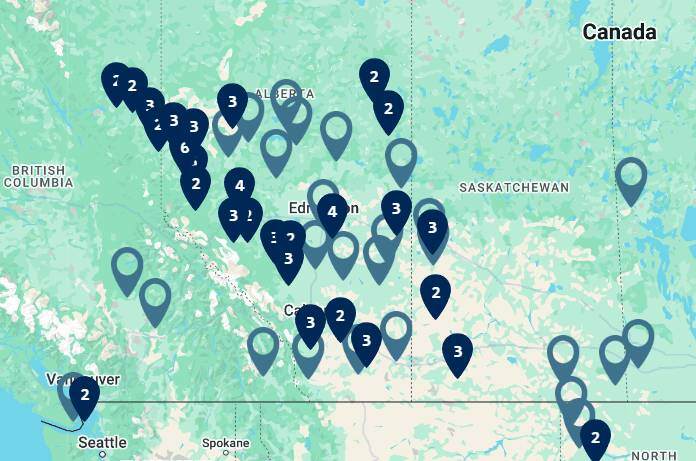On September 30, Canada observes the National Day for Truth and Reconciliation—a day dedicated to honouring the survivors of residential schools, their families, and the communities affected by this dark chapter in our country’s history. We spoke with Andrea Nelson, SECURE's Indigenous Relations Coordinator, who shared how she is honouring her family's history and resilience.
tan’si, Andrea n’stisyîhkâson, amiskwacîwâskahikan ohcinîya. nîya nêhiyaw êkaw Orcadian. Hello, my name is Andrea, and I grew up in Edmonton. I am Cree and Orcadian, as well as Suoix and Powhatan (Algonquian). In nêhiyaw culture, beginning each interaction by situating yourself and your family is essential. This is also known as our ohtisiy (belly button) connection, a critical part of our culture.
My ohtisiy connection: I was born to Wesley Nelson and Fiona MacGillivray on March 28th, 1995. My mother, Fiona, was born in Kirkwall, Orkney, with a long Scottish lineage, while my father, Wesley, has a diverse genealogy.
He is Nêhiyaw, Sioux, Powhatan (Algonquian), East Indian, and English. My nohkôm (grandma) Donna was Nêhiyaw, Sioux and Powhatan (Algonquian). My nimosôm (grandpa) Leo was East Indian and English. However, despite my mixed Indigenous and European heritage, I am not Metis; I am considered First Nations.

My nohkôm Donna (pictured) was born to Walter Jr. Satchwill and Joyce Abbott on June 17th, 1943, in Calgary, Alberta. My châpân (great-grandparent) Walter Jr. is Nêhiyaw. His mother, Pearl Crawford, was born in 1893 in North Dakota as a tactic to avoid residential schooling in her parent's home territory of Ontario. Her father, Robert, joined the United States Army so they could gain citizenship, as most Indigenous people in 1893 were not considered citizens. When Pearl returned to Canada in 1913 and married Walter Sr., she was not considered a Canadian, nor could she hold Indigenous status.
My châpâns Walter Sr., Pearl and Walter Jr. resided in a small town called Ekville, located near the O’chiense First Nation Reserve. Pearl died at a very young age from pneumonia in 1920; she was transported to the Hudson's Bay Trading Post, located on what is now known as Jasper Avenue, Edmonton, to receive medical treatment but sadly never returned home. Due to Walter Jr. losing his mother, Pearl, at a young age, he was sheltered from his Indigenous culture; in fact, he was taught to neglect his culture, and this was passed on to my nohkôm.
 My châpân Joyce, Donna's mother, was of Sioux and Powhatan descent from Virginia and was the 11th great-granddaughter of Chief Powhatan, the father of Matoaka (Pocahontas). My châpân Alice (Joyce’s Mother) was taught at a very early age, never to mention her Indigenous heritage when she came to Canada in 1918. Both sets of my châpâns feared the repercussions of being Indigenous, and they, unfortunately, raised their children Walter Jr. and Joyce in the same manner.
My châpân Joyce, Donna's mother, was of Sioux and Powhatan descent from Virginia and was the 11th great-granddaughter of Chief Powhatan, the father of Matoaka (Pocahontas). My châpân Alice (Joyce’s Mother) was taught at a very early age, never to mention her Indigenous heritage when she came to Canada in 1918. Both sets of my châpâns feared the repercussions of being Indigenous, and they, unfortunately, raised their children Walter Jr. and Joyce in the same manner.
My nohkôm was sent to Foster Care at the age of 5 to attend day school; she was in and out of foster homes until she was 17. Sadly, my nohkôm passed when she was relatively young, at the age of 55, as a result of the childhood trauma she endured.
From my birth, my family has instilled that we should not mention our Indigenous culture to people. As a child, my nohkôm told me we were Indigenous and that we have to be careful who we tell; this stayed with me long after she passed. But as I grew, I decided I no longer wished to be cautious about my culture and who I am.
When I began my journey to reconnect with my culture, I received a lot of support from the people in my life. However, it took my Dad a few years to accept my decision and, ultimately, join me. Beginning the journey to reconnect is an incredibly long and hard road, but it is also one of the most rewarding things I have ever done.
In 2015, I applied to Concordia University of Edmonton, hoping to become a teacher on the reserves, but my path quickly changed when I began taking Sociology classes. A spark ignited, and I realized I could do more for my people through research. I finished my first degree in Sociology and Early Childhood Education in 2019; I then continued with a Sociology Honors degree, minoring in Religion and Philosophy and Indigenous Studies. At the same time, I became a research assistant for Dr. Robin Willey on a project that focused on Art and Colonialism. This led me to apply for a Bachelors degree in Native Studies, which I am completing at the University of Alberta.
 I also became very vocal about the lack of Indigenous Classes at my University and helped hire the first Indigenous teacher at Concordia University of Edmonton. I conducted my capstone research on the violence towards Indigenous Women and Girls. I began learning my language, Plains Cree, in the first Cree class offered at Concordia University of Edmonton. I’ve participated in the Walls to Bridges program, a collaborative university class conducted in Edmonton Institution for Women with the maximum inmates; the program requires 98% of the class to be Indigenous due to the overwhelming incarceration of Indigenous peoples.
I also became very vocal about the lack of Indigenous Classes at my University and helped hire the first Indigenous teacher at Concordia University of Edmonton. I conducted my capstone research on the violence towards Indigenous Women and Girls. I began learning my language, Plains Cree, in the first Cree class offered at Concordia University of Edmonton. I’ve participated in the Walls to Bridges program, a collaborative university class conducted in Edmonton Institution for Women with the maximum inmates; the program requires 98% of the class to be Indigenous due to the overwhelming incarceration of Indigenous peoples.






